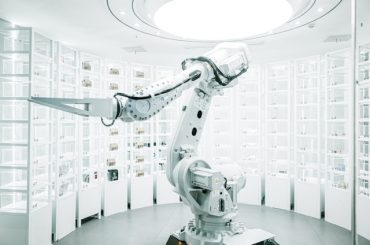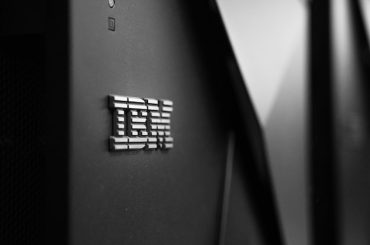Recently in one of my latest work assignments while carving out the MVP (yes…you guessed it right, I am a Product Manager by profession, choice, and passion) I was faced with a choice to either address the known customer needs in established markets or for customers that seem insignificant or do not yet exist.
The question was how do I justify diverting my resources for something new, rather disruptive over meeting the needs of my established customers and fending off competitors (wish it was a whimsical world with Rainbows and Unicorns! More importantly, unlimited resources and time!).
I love going back to literature when puzzled by such questions (show-off! guilty!). After all, I will need instances and/or precedence to justify what I am proposing, more importantly, “Why am I proposing?”. I fairly recollect reading about “The Mini Mills case” in one of my b-schools’ lectures, but before deep-diving into the case let’s understand the term “Disruption”.
Back to the roots of disruption
According to the theories, once a radical innovation has been launched successfully, such as the computer or the Internet era of innovation, the markets stabilize for several decades.
Radical innovations stem from the creation of new knowledge and the commercialization of completely novel ideas or products. Research on radical innovation therefore focuses on the types of organizational behavior and structures that explain and predict the commercialization of breakthrough ideas.
Harvard Business Review
Read: LEGO – Powered by the Customers’ Inventiveness
Customers gradually start becoming familiar with the innovation, then they start wanting it. Companies improve associated products and their manufacturing process to provide the best to the customers. Yes! you guessed it right all this slowly starts converging towards what the literature terms as “dominant design”, where all offers look the same. On the other hand, Disruptive innovation from the paper is defined as
Disruptive innovation research describes a process in which new entrants challenge incumbent firms, often despite inferior resources. This may happen in two ways. Entrants may target over-looked segments of the market with a product considered inferior by the incumbent’s most-demanding customers and later move up-market as their product improves. Or, they may create markets where no market exists and turn non-consumers into consumers.
Harvard Business Review
Coined by Clayton M. Christensen, the term ‘disruptive innovation’ refers to a new entrant into a market that eventually disrupts and outperforms the established players.
(Watch from 00:28 secs to 03:51 secs if hard pressed for time)
In simple words remember the times when the iPhone was launched, the main criterion for buying a mobile phone was battery autonomy. Yet the product was launched with less than 24 hours of autonomy, at a time when the norm was five days (Nokia’s Era). Who today would sacrifice the ergonomics of a touchscreen in lieu of a few days of battery? That’s the power of a disruptive innovation! Now that we understand what a Disruptive Innovation is let’s address the most important question.
Read: The Simplicity of Brand Disruption by iD Fresh Food
How does disruptive innovation work?
“History is replete with examples of disruptive innovation, dating back to ancient times. Examples include the compass, the printing press, currency, gunpowder…Imagine that you are Kodak, a company based largely on film, and someone develops digital imaging, or that you are a mainframe computer company like IBM or DEC, and advances in processors lead to the development of inexpensive but powerful personal computers. In our own lives, we recognize how cable or satellite TV has displaced air antennas and how cell phones have displaced landlines.”
Disruptive innovation as a driver of science and medicine, J. Larry Jameson
One of the most consistent patterns in business is the failure of leading companies to stay at the top of their industries when technologies or markets are disrupted.
Xerox let Canon create the small-copier market(of course the management did their thorough diligence before letting Canon create, but it didn’t work as planned and the rest is history).
Why do you think Goodyear and Firestone entered the radial-tire market quite late? Why did Sears give way to Wal-Mart? Bucyrus-Erie allowed Caterpillar and Deere to take over the mechanical excavator market-What were they thinking?
Apple Computer led the world of personal computing and established the standard for user-friendly computing but lagged five years behind the leaders in bringing its portable computer to market. (Credit: HBR Case)
The history chronicles a litany of such examples. Here’s a detailed one: “The Minimills Case”.
Disruptive Innovation spares no one
Now apply the learnings to any Case where a dominant player couldn’t sustain the success: We all know IBM dominated the mainframe market but why did they miss by years the emergence of minicomputers?
Another very famous tale, Netflix is a textbook example of successful disruptive innovation. Why did even with a huge high street presence, intense customer loyalty, and a household name Blockbuster filed for bankruptcy with over $900 million in debts? The fundamental reason lies at the heart of the paradox: leading companies succumb to one of the most popular and valuable management dogmas: They stay close to their customers always.
In fact, the processes, acumen, and incentives that companies use to keep focused on their mainstream customers work so well that they blind those companies to important new disruptive technologies in the emerging markets.
Many once on the Top, successful companies have learned the hard way the perils of ignoring new technologies that do not initially meet the needs of mainstream customers. Focussing on the current customer segment is important but at the same time, one needs to be a visionary. It’s how strong we bait our customers to let them adopt our innovation. After all, it’s all about customer value generation. Most of the important things in the world have been accomplished by people who have kept on trying when there seemed to be no hope at all
So what would you pick if faced by a dilemma of either staying close to your customers or disrupting the market? I think I have enough for my meeting now 🙂
Interested in reading our Advanced Strategy Stories. Check out our collection.
Also check out our most loved stories below

IKEA- The new master of Glocalization in India?
IKEA is a global giant. But for India the brand modified its business strategies. The adaptation strategy by a global brand is called Glocalization

Why do some companies succeed consistently while others fail?
What is Adjacency Expansion strategy? How Nike has used it over the decades to outperform its competition and venture into segments other than shoes?

Nike doesn’t sell shoes. It sells an idea!!
Nike has built one of the most powerful brands in the world through its benefit based marketing strategy. What is this strategy and how Nike has used it?

Domino’s is not a pizza delivery company. What is it then?
How one step towards digital transformation completely changed the brand perception of Domino’s from a pizza delivery company to a technology company?

















